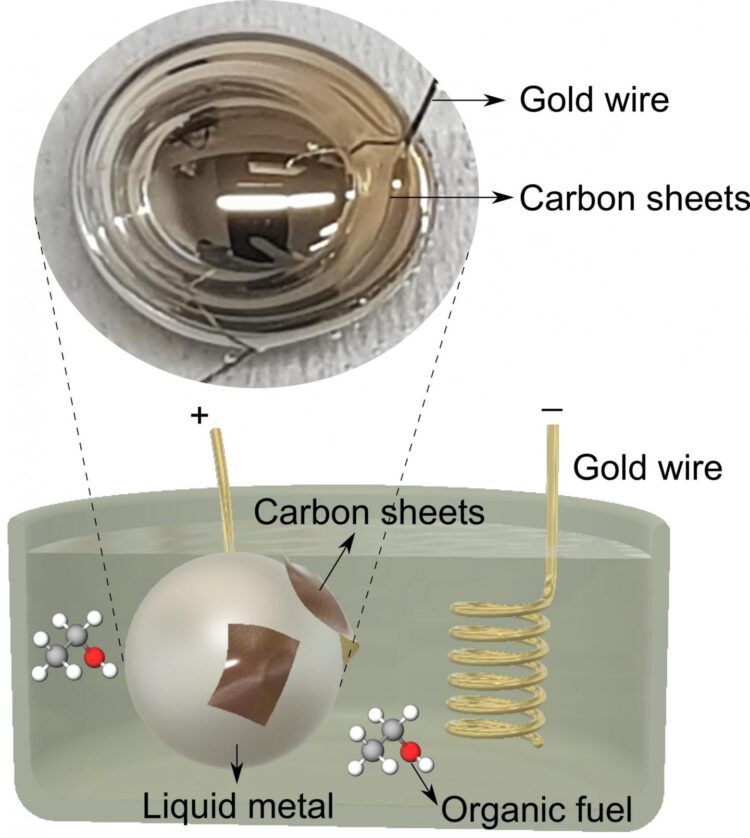First synthesis of ultra-thin graphitic materials at room temperature using organic fuels

Credit: UNSW, Sydney
For the first time, FLEET researchers at UNSW, Sydney show the synthesis of ultra-thin graphitic materials at room temperature using organic fuels (which can be as simple as basic alcohols such as ethanol).
Graphitic materials, such as graphene, are ultra-thin sheets of carbon compounds that are sought after materials with great promises for battery storage, solar cells, touch panels and even more recently fillers for polymers.
These researchers were able to synthesize ultra-thin carbon-based materials on the surface of liquid metals at room temperature electrochemically. Before this report, others had shown electro-formation of such carbon-based materials only by transferring sheets onto the electrodes or electrode exfoliation of naturally-occurring carbon crystals from mines.
“Using gallium liquid metal, we could catalytically break down the fuels and form carbon-carbon bonds (the base of graphitic sheets) from organic fuels at room temperature. The ultra-smooth surface of liquid metals could then template atomically-thin carbon based sheets. Removal of these sheets was easy as they do not stick to the liquid metal surface,” suggested Prof Kalantar-Zadeh, the lead of this project and the Director of the Centre for Advanced Solid and Liquid based Electronics and Optics (CASLEO) at UNSW.
“It is simple. Why has room temperature electro-synthesis of two-dimensional graphitic materials not been achieved before? We cannot offer a definitive answer. Perhaps disregarding ultra-catalysts such as liquid metals and too much emphasis on solid electrodes which are inherently not smooth.” added Dr Mohannad Mayyas the first author of the paper.
###
The paper Liquid-Metal-Templated Synthesis of 2D Graphitic Materials at Room Temperature was published in highly reputed journal of Advanced Materials on the 8th of June 2020 (DOI: 10.1002/adma.202001997)
Researchers from RMIT, University of California Los Angeles (UCLA) and the Center for Multidimensional Carbon Materials, Institute for Basic Science (IBS), Korea are the other collaborators of the research and authors of the manuscript.
Contact detail: Dr. Mohannad Mayyas, [email protected]
Media Contact
Errol Hunt
[email protected]
Original Source
http://www.
Related Journal Article
http://dx.





